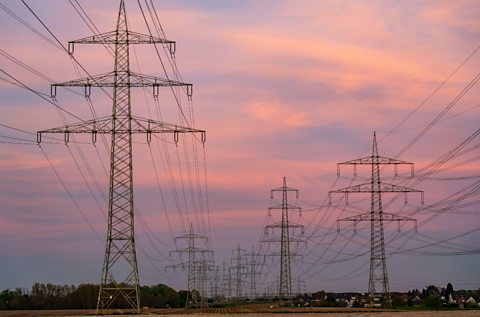Key facts
Although renewable energy is becoming more common, there are still big issues to overcome if we are to move away from fossil fuelsFuels that come from the Earth. Fossil fuels are all old life forms that have decomposed and been compressed over a long period of time under ground or under the sea. Coal, oil and gas are fossil fuels. completely.
Many renewable Something that does not run out when used. energy sources (wind, wave, solar) rely on the weather, which is unpredictable. It is not always possible to produce a reliable supply of energy. Storing energy might help solve this problem.
Energy storage is also important to make renewable energy more portable.
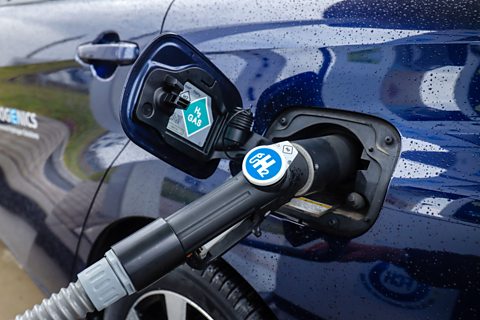
New renewables and their impact
Find out about some of the newer types of renewable energy generation.
We’ve come a long way in increasing our renewable energy supply and reducing our fossil fuel consumption but we still have some big issues to overcome.
Many renewable energies, like wind, wave, and solar, rely on the weather. But the weather is unpredictable, so these renewable energies cannot always produce a reliable supply of energy when we need it. Finding ways to store energy would solve this problem.
Large amounts of energy can be stored in pump storage systems, like at Cruachan Power Station. Water held in an upper reservoir has a lot of potential energy. When energy is needed, the water is released and flows down through turbines and into the lower reservoir. When there is a surplus of electricity, Cruachan can use some of this spare energy to pump water back up to the upper reservoir ready to flow back down again.
Gravity storage is a newer system that uses the same principle. Instead of water, the idea is to raise and lower huge weights in a deep shaft of up to one-thousand five-hundred metres. When there is excess electricity, it can be used to raise the weights which stores potential energy. Lowering the weights converts this into kinetic energy and generators turn this into electrical energy.
By lowering the weights at different speeds, the amount of electricity generated can be controlled to meet different levels of demand.Most renewables are used to generate electricity but we still heavily rely on fossil fuels for transport. Can we all switch from these to electricity, or even other energy sources? Electric cars are good for shorter trips but the battery size limits how far you can travel before you need to recharge. We will need to invent longer-lasting batteries that still provide the same amount of power and are a similar size and are quicker to recharge.
Another solution is hydrogen fuel cells. These react hydrogen and oxygen to produce usable electrical energy. This doesn’t release greenhouse gases or polluting exhaust fumes – only water. But hydrogen fuel cells are expensive and need to be much bigger than a conventional petrol tank. They’re currently more suitable for lorries and buses than for family cars.
Most homes in Scotland have gas boilers to provide heat. Since natural gas is a fossil fuel, we will need a better solution. One alternative is air source heat pumps. These take heat energy from the air outside and use it to warm your central heating system. But these can’t supply as much heat as a gas boiler so you need bigger radiators or underfloor heating to keep your house as warm.
There is still a lot of progress to be made before we can make our energy supply sustainable and these are just of the ideas that might help us do it.
Maybe you have your own idea of where and how we can generate and collect renewable energy.
Pumped storage
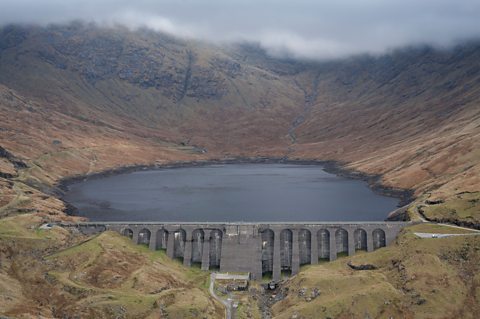
Pumped storage is not a new idea but it could be developed more to add to our energy storage capacity.
Large amounts of energy can be stored in pumped storage systems like at Cruachan Hydroelectric Power Station.
Water held in an upper reservoir has a lot of potential energy.
When energy is needed, the water is released and flows down through turbineA turbine is a machine that turns the movement of liquid or gas into energy that can be used. In a simple turbine water or air push against turbine blades and spin them round. The spinning blades turn a long pole called a shaft. The shaft can then turn other pieces of machinery, such as a generator that is used to produce electricity. and into the lower reservoir. This converts kinetic energy into electrical energy.
When there is a surplus of electricity, Cruachan can use some of this spare energy to pump water back up to the upper reservoir, ready to flow back down again.

Gravity storage
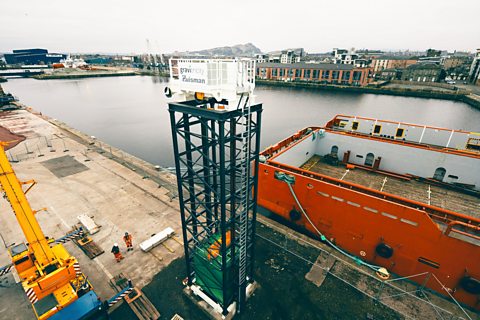 Image source, Courtesy of Gravitricity/ Peter Dibdin
Image source, Courtesy of Gravitricity/ Peter Dibdin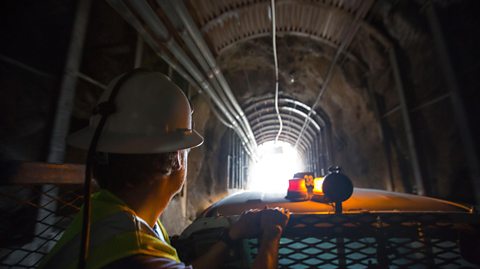
Gravity storage is a newer system that uses the same principle as pumped storage. Instead of water the idea is to raise and lower huge weights in a deep shaft of up to 1500m.
When more electricity is being generated than is being used, some of this extra energy can be used to raise the weights. This builds up their gravitational potential energy.
Releasing the weights so that they are lowered converts this potential energy to kinetic energy. Turbines and generators turn this into electrical energy - kinetic energy converted to electrical energy. By letting the weights fall at different speeds, the amount of electricity generated can be controlled to meet different levels of demand.

Renewable energy for transport
Electric cars
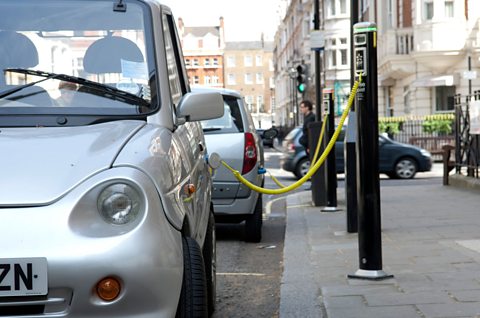
Electric cars are great for short trips however the battery size limits how far you can travel before you need to recharge.
Longer lasting batteries will need to be invented that provide the same amount of electricity, are a similar size but also are quicker to recharge.
Some cars have hybrid systems which use both petrol and batteries. The car uses energy created on braking to recharge the battery, which can be used to power the car at moderate speeds.
Fuel cells
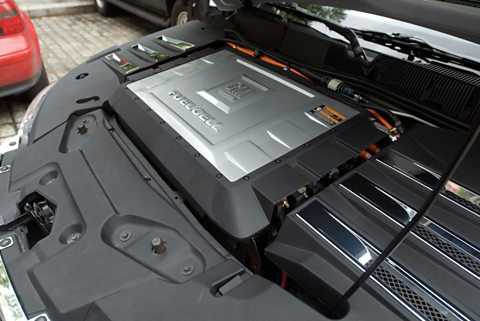
Another solution to providing portable energy stores for transport is hydrogen fuel cells.
These react hydrogen and oxygen to producing usable electrical energy. There are very clean as no carbon dioxide is produced; only water.
- Stored hydrogen enters the fuel cell.
- A catalyst splits hydrogen molecules into protons and electrons
- The protons travel through an electrolyte from the positive electrode to the negative electrode
- The electrons travel through an external circuit from the positive electrode to the negative electrode, creating a flow of electricity.
- At the negative electrode the protons combine with the electrons and oxygen to form water.
But hydrogen fuel cells are expensive and need to be much bigger than a conventional petrol tank. They’re currently more suitable for lorries and buses than family cars.
Renewable ways to heat our homes
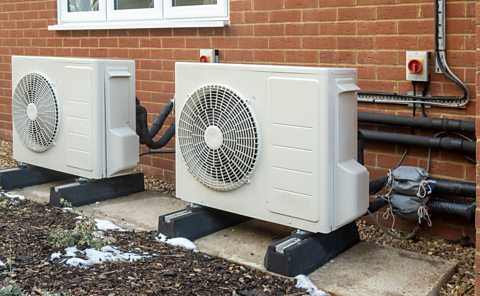
Most homes in Scotland have gas boilers to provide heat. Since natural gas is a fossil fuel, we will need a better solution.
One alternative is air source heat pumps. These take in air from outside your home and compress it. This concentrates the heat energy from the air so that even cold air can be used to warm your central heating system.
But these can’t supply as heat at such high temperatures as a gas boiler, so bigger radiators or underfloor heating are needed to keep your house as warm. This also means that many of our homes will need to have much better insulation for heat pump systems to work well.

Test your knowledge
Quiz
More on Energy sources and sustainability
Find out more by working through a topic
- count1 of 12
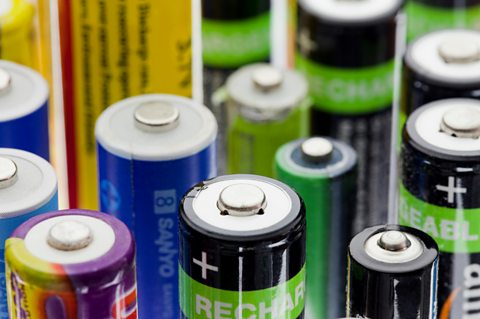
- count2 of 12
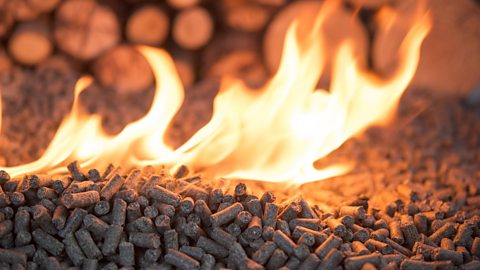
- count3 of 12

- count4 of 12
